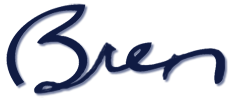While not among the best of the Pixar canon, Brave is a tightly (and familiarly) structured work that panders to the worst Scottish stereotypes while creating an endearingly flawed, realistic character struggling with mom’s expectations.
 See it, especially mothers and daughters. It’s their movie. (In full disclosure, I am also a brother of a fiery redhead, so the tale had more than a passing connection).
See it, especially mothers and daughters. It’s their movie. (In full disclosure, I am also a brother of a fiery redhead, so the tale had more than a passing connection).
Fairytales always involve a character overcoming a “curse” imposed by a strong family influence. In Amélie, her father says her heart is too weak for relationships. In Titanic, Rose’s mother condemns her to a loveless marriage to save the family. Brave is no different.
In many European fairytales, the child leaves home and battles a wicked witch, goblin or bear that in some way represents the mother figure. By overcoming, the child is able to resolve feelings (fears, passions, worries) dredged up by maturity, and thus returns home to a better relationship with the parent.
What Pixar did is take on this subliminal fairytale idea more literally. The bear doesn’t represent the mother – the mother actually becomes the bear through the witch’s (false ally’s) spell.
The result is a mortality tale where both child and mother change, growing deeper into relationship.
The animation is spectacular. Merida’s hair is practically its own character and she resembles every girl’s young longing and passion.
That said, it could be stronger. We feel like we’ve seen this story before, which has its advantages, especially with the fairytale elements, but that also means it will never achieve the unbridled creativity that made the best Pixar and Miyazaki movies.
As in Up, the “legend” returns in the second half of act 2 with a deeper meaning. While clever, we’ve seen it before.
But the big issue is the mother’s conversion. You see, our hero Merida grows from “not my fault” to “It’s all my fault” through the journey to restore mom from the bear curse, and in the process, deepens her relationship with mother.
But the mother changes from “do as I say for the good of the clan,” to “break tradition, follow your heart, and love whomever you want,” because of what? Getting in touch with her animal side? Almost getting slaughtered thanks to a willful child “following her heart” in the first place?
This is the wrong direction, since it teaches children that their parents’ (and culture’s) beliefs, traditions, and dreams are merely arbitrary, outdated and outright suffocating nonsense that should be overturned when it doesn’t “feel” right.
That doesn’t feel right to me. Even if the writers wanted to take that view (the opposite of Toy Story’s theme, incidentally), the story has to earn it, and it doesn’t.
